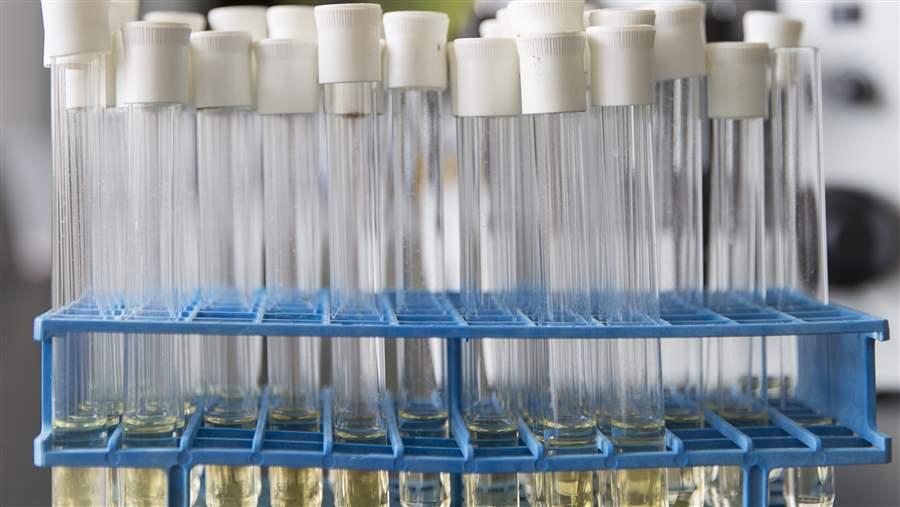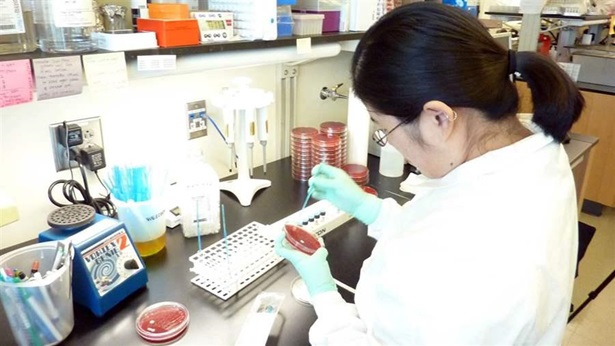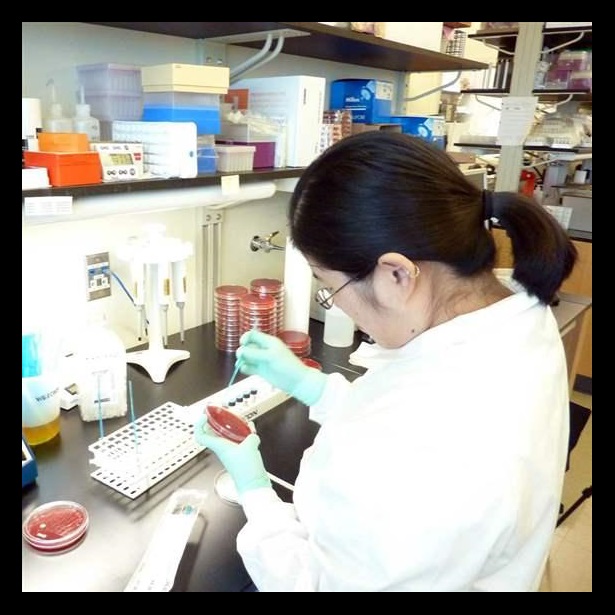Nontraditional Products in Development to Treat or Prevent Bacterial Infections
Because the conventional antibiotics pipeline remains thin, finding new approaches is critical
The data in this analysis is out of date. Please visit Assessment of Nontraditional Products in Development to Combat Bacterial Infections.
While antibiotic innovation—finding and designing new types of antibiotics and improving existing drugs—remains essential to combating antibiotic resistance, “outside-the-box” approaches to preventing and treating bacterial infections are also needed. Such nontraditional approaches encompass a variety of products, including:
- Well-known medical interventions, such as vaccines and immunotherapies, that have been proved effective in treating other types of disease and may also hold promise for the prevention or treatment of systemic (throughout the body) bacterial infections.
- Entirely new types of therapies that have never been approved for use in human medicine. For example, products that disarm harmful pathogens to neutralize their threat to patients, or products that replace harmful bacteria with “healthy” bacteria to alleviate disease.
Nontraditional products are unlikely to fully substitute or replace antibiotic use but could provide new treatment options for patients through combined use with antibiotics or as a means of preventing an infection from taking hold. Questions remain regarding how nontraditional products should be tested for safety and efficacy, and how they could be used appropriately in the clinical setting.
To shed light on the development of these types of products and evaluate public policies to spur innovation, The Pew Charitable Trusts assessed nontraditional products for the treatment of systemic bacterial infection in clinical testing for the U.S. market. The list, which will be updated regularly, identifies each product and its manufacturer, type of approach, potential targets, and stage in the clinical development process. The list does not include products that are in development but not yet being tested in humans. (See the methodology below for the criteria used to select the nontraditional products.)
Findings
The current assessment of the pipeline shows that 32 nontraditional products are in clinical development for the U.S. market. Unlike many antibiotics in development, most nontraditional products are active against a limited range of pathogens. As of March 2017:
- Of the 32 nontraditional products in development, seven were in Phase 1 clinical trials, 21 were in Phase 2 clinical trials, three were in Phase 3 clinical trials, and one was recently approved. (See the glossary of terms for descriptions of each phase.)
- Over a third of the nontraditional products in development are vaccines, and almost a third are antibodies. The remaining 10 products include lysins, probiotics, and peptide immunomodulators.
- Over half of the nontraditional products in development are for the treatment of Clostridium difficile (an organism associated with serious, sometimes life-threatening diarrhea) or Staphylococcus aureus (associated with skin and a variety of systemic infections).
- A third of the nontraditional products in development are being pursued by firms in the top 50 pharmaceutical companies by sales revenue. These firms are primarily developing vaccines.
Harnessing the promise of nontraditional products requires focused attention from a broad range of stakeholders, including scientists, clinicians, funders, and regulators to support:
- Targeted research and development to evaluate whether a given nontraditional approach is effective.
- Demonstrated improvement over antibiotic treatment alone.
- Establishment of regulatory guidelines for approval of innovative products.
Nontraditional products in development for the U.S. market
Antibody: Proteins naturally produced by the immune system to identify and help remove potentially harmful pathogens. Novel therapies may take advantage of the specific targeting capacities antibodies have to bind to bacteria and inactivate them in a variety of ways.
Virulence inhibitor: Molecules that work by disarming pathogens, preventing and neutralizing their harmful effects (such as bacterial toxins), or weakening bacterial defenses to help patients’ immune systems overcome infections.
Peptide immunomodulator: Part of most organisms’ innate immune response. They modulate the immune system to enhance its response to the infection.
Lysin: Derived from bacteriophages (viruses that infect bacteria) that target and break up bacterial cell wall architecture.
Probiotic: Live microorganisms that help maintain and restore populations of beneficial bacteria in the human gut. The administration of broad spectrum antibiotics often indiscriminately kills gut bacteria, increasing the possibility of side effects and colonization by harmful bacteria. Administering probiotics alongside antibiotics may help alleviate these risks. In addition, probiotics may help in the treatment of challenging infections such as C. difficile.
Vaccine: Agents that stimulate the body’s immune system to recognize and destroy pathogens, such as bacteria, protecting the patient from infection. Vaccines typically contain inactivated disease-causing pathogens or components that resemble them.
Methodology
An initial list of nontraditional products in clinical development was provided by Citeline Inc.’s Pharmaprojects pipeline drug intelligence service.
The pipeline includes nontraditional products intended to treat or prevent serious infections that act systemically but excludes locally acting drugs such as topical, ophthalmic, and inhaled products. It does not include new indications or different formulations of previously approved products, or products used to treat Helicobacter pylori, biothreat pathogens, or mycobacterial infections such as tuberculosis and Mycobacterium avium complex.
Also included in the pipeline are products targeting C. difficile infections, many of which act locally in the intestines. C. difficile is often the consequence of systemic antibiotic use, and, while these bacteria are not yet widely resistant to antibiotics, the Centers for Disease Control and Prevention considers this pathogen an urgent threat. Thousands of Americans contract the illness each year, and an estimated 15,000 die as a result.
Pew supplemented the data provided by Citeline with other public information—specifically, trials registered in clinicaltrials.gov, articles published in the scientific literature or trade press, and company communications. Pew also works with external experts who advise on selection criteria and accuracy of information. This pipeline focuses on drug candidates under development for the U.S. market.
This pipeline will be updated biannually, beginning in March 2017. To submit additions, updates, or comments, please contact [email protected].
Carolyn Shore works on Pew’s antibiotic resistance project.












